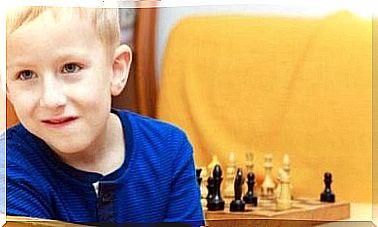Learning Languages as A Child
In this article, we go through children’s incredible ability to learn languages and how we can best help them.
During childhood, the human brain develops at an amazing rate. Thanks to this, and unlike what then applies in adulthood, children’s brains are highly motivated to learn and play into all the information they receive from the environment around them.
Children are incredibly quick to master, for example, new technology or acquire a second language. It is thanks to the fact that children’s brains develop so fast. A common example is families moving to a new country that does not speak the child’s mother tongue. The child then usually has no problem quickly adapting and learning the new language.
However, you do not have to move to a new country for your children to learn a second language. It is also possible in an educational context if you start at an early age.
The enormous potential of children to learn languages
During childhood, the brain is constantly evolving. Therefore, the brain has a large and almost automatic potential for language learning up to a certain age.
There is a big gap between the ability to assimilate and learn languages in childhood and adulthood. After two to three years, an adult shows little to virtually no progress just by listening to a foreign language.
On the other hand, a 7 to 10 year old child in the same environment can master the language completely. He or she can also speak it without any noticeable accent. This does not mean that you cannot acquire a new language as an adult. However, it does not happen automatically and naturally. Instead, one must learn in a didactic way.
This can be clearly seen in immigrant families around the world. There, it is quite common for parents to never fully master the language of the new country. Their children, on the other hand, easily manage to adapt to the new language.
How do you learn a language as a child?
Learning, both as a child and as an adult, is a process that responds to new stimuli you receive from your surroundings.
Depending on its relevance or intensity, the stimulus during the “critical period” (during childhood) has a relatively neuronal growth that enables synaptic “plasticity”.
This is a process for gathering relevant information from the environment. It is also known as a learning potential.
The unique properties of the brain in childhood mean that you experience everything as new. Together with the rapid development, this makes the learning potential much better than in adulthood.
An adult’s brain has already gathered all the information it needs to create basic patterns of behavior and survival in the individual in their specific environment. Therefore, it means that learning must instead be driven by willpower.
Tips to help your child learn a second language
The digital age we live in has created endless opportunities to promote language learning in children at home. It does not require much effort and you do not have to send the children to a language school.
It is as easy for children to play video games and watch videos in another language as it is with their own. Make use of resources such as YouTube, interactive video games, toys and educational materials. They all help your child begin to assimilate and learn a new language. And this without them even being aware of it.
Of course, it depends to a large extent on the parents’ motivation and perseverance if the child actually learns the new language. But you will surely be surprised at how quickly your child begins to absorb the new language and make it his own.









